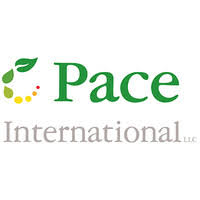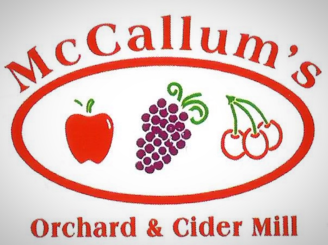Favorable weather this spring has set the Northwest up for what is hoped to be a great cherry season.
“We couldn't have been luckier with the weather this growing season,” said Brianna Shales, marketing director for Stemilt Growers, a Wenatchee, Wash.-based grower-packer-shipper. “At this point, the orchards are looking great with no notable frost or rain. We had a good bloom period with warmer temps and great bee activity. Of course, Mother Nature can always change things.”
Joel Hewitt, vice president of sales for the Wenatchee-based CMI Orchards, said an early spring with warm, dry weather helped create excellent pollination and fruit set.
“This year's cherry crop is off to a great start, thanks to a relatively mild spring across the Pacific Northwest,” Hewitt said. “We've avoided the extremes, no damaging cold snaps or heat spikes, which has made a world of difference for growers.”
A winter freeze impacted the overall 2024 crop size in Washington, but that's not the case this year, which marketers hope will allow for an extended harvest into September.
Mac Riggan, vice president of sales and business development for Chelan, Wash.-based Chelan Fresh Marketing, said a good start bodes well for eating quality and shelf life in June, July and August. He said growers have pruned well in the offseason to help trees create good-sized fruit.
“What I see is a clean crop,” Riggan said. “There's not a bunch of frost marks or hail or just insect damage. It just looks really good.”
“Overall, the quality and size of the crop looks almost perfect,” said B.J. Thurlby, president of Northwest Cherry Growers and Northwest Cherries.
Seasonal outlook
Early estimates project a larger cherry crop this season, about 24.5 million boxes, which Hewitt said is about 28% higher than last year. This is up from last year's 19 million boxes, according to Thurlby.
Riggan said some young cherry plantings in the Pacific Northwest have started to produce, which adds to overall supply.
“We're going to have about 10% more as a shipper ourselves, and we were expecting a good quality crop,” he said.
Thurlby said the region grows more than 60 varieties of cherries, everything from bing, skeena, sweetheart, rainier, coral champagne and Black Pearl.
“Unlike other commodities, we try to promote two types of cherries: dark sweets and yellow varieties,” Thurlby explained. “Each shipper has their own specialty, but with over 100 varieties out there, it's very hard to promote each one individually throughout a three-month window — especially when you move from one to another so quickly.”
Riggan said the area might see fewer rainier cherries this year because some growers have removed orchards with rainier pollinators.
Retailers can expect cherries from the Pacific Northwest to start shipping around June 1 and late June for British Columbia cherries.
“Peak harvest windows will be the week of June 23, 2025, and the week of July 14, 2025,” Thurlby said. “However, there will be ample product for promotions from mid-June through at least mid-August.”
Shales said the Fourth of July holiday is another time retailers can take advantage and rally behind promotions.
“We don't foresee any gaps or gluts currently, but July is shaping up to be a big promotion opportunity on cherries out of Washington for retailers to plan around,” Shales added.
CMI expanded its cherry packing capabilities with the addition of Pacific Coast Cherry Packers and Chelan Fruit. Hewitt said these additional packing facilities, as well as consistent sizing, quality and expected supply, can help retailers build a confident program during the key promotion window in July.
“Unlike the last couple of seasons, which saw temporary oversupply due to overlapping harvests and erratic weather, 2025 is benefiting from more favorable and predictable conditions,” she said.

What consumers want
Cherry marketers say domestic demand looks solid this season as retailers have rolled out California cherries.
“Domestic demand for cherries in 2025 is showing strong momentum, driven by favorable market conditions, health-conscious consumer trends and strategic promotional efforts,” Hewitt said.
Shales said retailers see this season as an opportunity to capture missed dollars last year with the shorter cherry crop in 2024.
“Quality is the biggest reason why consumers come back for a second bag,” Shales said. “If the cherries can't deliver on flavor, freshness and firmness, it's likely that consumers will take a break from buying cherries for a while until they have a positive experience, according to a consumer cherry study conducted by Stemilt last year.”
Shales said there is a strong consumer preference for rainier cherries, though, and supply sometimes doesn't line up with that demand.
“If there are more rainier cherries available, retailers should look to do more with them because there is consumer demand for more of them,” she said.
Tariffs' effect
Marketers say exports are a critical part of the cherry season. Shales said that in years with a large domestic and global crop, international markets expand, and those expansions turn into future customers.
“Export markets have always been, and will remain, a fundamental portion of our cherry business,” she said. “We serve many long-term global markets where we have multi-decade and multi-product relationships, which all contribute to a successful cherry marketing program.”
Thurlby said it's possible that the Northwest will not ship a box of fruit to China or Europe this season and will look to other markets for that volume.
“We will increase our focus from China to more promotions in Southeast Asia, including Thailand, Vietnam, Singapore and Malaysia,” he explained. “Likewise, we will continue to run market growth programs in India.”
Marketers say the current tariff market adds a layer of unpredictability to this season's global market. Hewitt said CMI does not plan to seek out new export markets but will instead look to strengthen relationships with existing customers.
“These recent tariff implementations are impacting pricing and competitiveness for U.S. cherry exporters, prompting a more cautious and strategic approach to international growth this year,” Shales said.
And Shales and Hewitt both agreed that while growers closely monitor the current global market for cherries, growers remain optimistic.
“While we are concerned with the current status of tariffs and their effect on the global market for cherries [and all fruits], we remain confident and committed to all the markets we serve and hope to sell more cherries than ever in those markets,” Shales said.

Program previews
Stemilt plans to run its Kyle's Pick premium cherry program this year. The marketer refreshed the look on its pouch bags, clamshells and top-seals.
“Kyle's Pick is an R&D-backed program that requires cherries to meet dialed-in flavor and firmness specifications to qualify,” Shales said. “This program runs anytime this top-tier quality fruit is available during the Washington season and is meant to capture the attention of retailers' most premium shoppers.”
Stemilt will also roll out new packaging for its A Half Mile Closer to the Moon program. The new look features a prominent moon to highlight the growing region of the cherries, Shales said.
CMI also offers its Nature's Candy program for premium red and rainier cherries, and its American Dream program features patriotic branding for promotional windows such as the Fourth of July. CMI will also offer its XXL Cherry program with jumbo-sized fruit.
“Specialty varieties like Skylar Rae and Strawberry Cherries offer additional standout opportunities with their unique flavor profiles and eye-catching appeal, though availability is limited, making them ideal for limited-time promotions and specialty displays,” Hewitt said.
Riggan said Chelan Fresh will offer its Orondo Ruby cherries again this year in a 1-pound clamshell. He said the Orondo Ruby cherries grow large, so Chelan Fresh packs 15 ounces in the 1-pound clamshell to ensure fruit does not get bruised, offering consumers an optimum eating experience.
“It's like eating a rainier and a bing cherry at the same time,” Riggan said. “It's got high acid and high sugar. It's just a really unique eating experience.”
Chelan Fresh also will offer 9.5-row jumbo cherries in a top-seal. Riggan said these top-seal clamshells are enticing for high-end customers as well as many one-person households. While it's an extra SKU, it doesn't cannibalize a retailer's bagged cherry business, he added.
“They're not buying 2 pounds of cherries,” he said. “They just want something really good and a smaller quantity.”
Marketing ideas
It's important for retailers to capitalize on the seasonality of cherries and put a spotlight on cherry season when they're available, marketers say. Shoppers are busy, and any buzz a retailer generates can help kick off the season right.
Retailers can remind consumers that cherries are in season and available for a limited window. The idea, Riggan said, is to entice consumers to continue to buy cherries a few times throughout the season.
“We really want to get people to buy cherries three or four times a year,” he said. “That's really critical for success for both retailers and growers.”
Shales said online shoppers shouldn't be overlooked, either, and retailers should ensure online messaging lets those customers know when cherries are back in season.
Big displays in stores also help drive awareness and sales, she added.
“Since cherries are one of the last seasonal items in produce, it's important to let consumers know they're there,” Shales explained. “Build displays front and center in the produce department, preferably in a refrigerated space to ensure cherries stay fresh on the shelf, to drive awareness that these seasonal morsels are back and ready to enjoy.”
Hewitt said retailers should also consider adding smaller secondary displays to help drive impulse purchasing.
“Place smaller cherry displays near high-traffic areas such as checkout lanes or adjacent to complementary categories like ice cream or bakery,” she said. “These secondary placements can trigger spontaneous purchases, especially when cherries are positioned as a seasonal indulgence or healthy treat.”
Hewitt encourages retailers to monitor regional weather updates for late-season shifts and stay in contact with suppliers to align timing, volume and in-store strategy.
Riggan said he doesn't think retailers need to give cherries away with promotions. He said the industry will see a large volume of cherries from the last week of June into the Fourth of July holiday.
“If retailers will work with the industry and with shippers to lower their retails a bit, and lean in a bit, they can really drive a lot of sales and then finish up strong on the backside, maybe having brought some customers in to the cherry category during that lower price point, and then capturing some higher end sales at the end from people that maybe had a really good experience,” Riggan said.
Thurlby said retailers can also capitalize on health messaging with cherry displays.
“A recent study we did showed that retailers who used health messaging regularly while promoting cherries outperformed similarly priced retailers who didn't use health messaging by 84%,” he said.

















